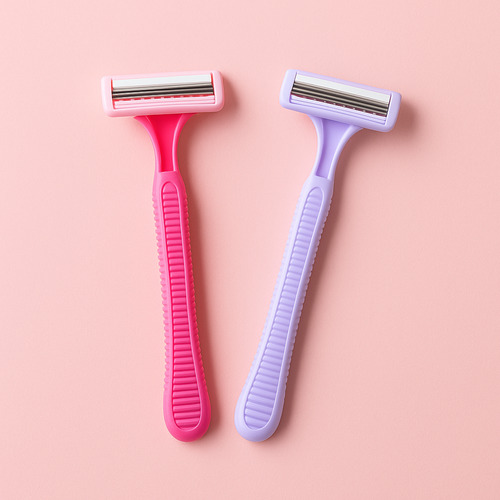Whether you are a beginner or an experienced client, wax hair removal often raises many questions. If you have never tried waxing before, you are probably curious about what to expect and may feel a little anxious. Even those who regularly use this procedure sometimes aren’t entirely sure how to properly prepare for a session and care for their skin afterward.
Despite its popularity, wax hair removal is surrounded by many myths, and conflicting information about preparation and aftercare only makes it harder to find reliable advice. In this article, we will clear up all doubts and tell you everything you wanted to know about waxing but were too shy to ask.
Hair Length Matters
For the best results, it is especially important to consider hair length, particularly for beginners who are, so to speak, going in “blind.” The optimal hair length for a first waxing session is 7–10 mm. Depending on the area being treated, you can either trim the hair slightly a day before your visit or shave in advance so that by the time of the procedure it has reached the proper length. Once you start waxing regularly, schedule subsequent sessions according to your individual hair growth rate — usually every 3–5 weeks.
Ingredients to Avoid
A common mistake among beginners is not knowing which ingredients to avoid. It is especially important not to use products containing retinol before waxing. Retinol is indeed effective: it smooths fine lines, minimizes pores, and fights adult acne. However, even a thin layer can increase skin sensitivity due to its high concentration, causing redness and irritation. As a result, the skin becomes more vulnerable to damage, especially during waxing. Therefore, it is not recommended to remove hair on the eyebrows, upper lip, or other facial areas if you are using retinol-containing products.
Never Shave Between Waxing Sessions
Even the most experienced clients sometimes make one common mistake — shaving between waxing sessions. At first glance, it may seem like a quick way to get rid of stubble, but shaving only removes the visible part of the hair at the surface of the skin. As a result, hair grows back within one to four days, and over time the skin becomes rougher.
The negative effects of shaving are especially noticeable if you want to experience all the benefits of waxing. With regular waxing, hair gradually becomes finer and grows more slowly, which increases the time between treatments and makes regrowth less visible. At the same time, constant shaving stimulates hair growth: when the hair is cut at the base, it tends to grow back faster, thicker, and denser — and sometimes more than one hair can grow from a single follicle.
In addition, shaving increases the risk of cuts, irritation, and ingrown hairs, which can worsen the condition of the skin and raise the likelihood of infection.
Regularly moisturize and exfoliate your skin
How you care for your skin before and after waxing directly affects the results. Exfoliation and moisturization are essential steps. Regular moisturizing helps the skin stay healthy, soft, and elastic. This is especially important during winter when the hair tends to become drier and may break during waxing. Broken hairs can lead to faster and denser regrowth.
Learn About the Types of Wax
efore booking your first appointment or visiting a new salon, it’s a good idea to read reviews and find out more about the types of wax they use. This will help you choose a formula that best suits your skin type and individual needs.
There are several types of wax, but the most common remains the classic wax, which is removed with strips. This method is considered more labor-intensive, takes more time, and can be quite painful.
Hard wax is an alternative to the traditional one. It doesn’t require strips; however, due to its synthetic composition, it may not be suitable for all skin types or all areas of the body.
The most modern and gentle option is elastic wax. It is made from natural ingredients — such as pine resin and beeswax — and is known for its soft, skin-friendly application. When applied, it stretches, reducing pressure on the skin, making the procedure much more comfortable.
Additionally, elastic wax is applied at a temperature close to body temperature, allowing the technician to work faster, more precisely, and with minimal risk of skin irritation.
Not all waxes are equally effective
As mentioned earlier, there are several types of wax, each with its own unique characteristics. The best choice is elastic wax, as it offers numerous advantages. Although hard wax is often used in many spas, experts warn that hard waxes tend to break and crack, which makes them more difficult to remove and reduces the effectiveness of hair removal. Another important difference between these types lies in the application temperature: elastic wax is applied at body temperature, whereas hard wax is applied hot, which, if used incorrectly, can cause burns.
Maintain the right interval between procedures
Maintaining the proper interval between waxing sessions not only ensures the best results but also helps you plan your skincare routine wisely around upcoming events. It is essential to keep a regular waxing schedule throughout the year. Even if you are less concerned about leg hair during winter, taking a long break may undo all your previous progress — meaning you’ll have to start over by spring.
If you’re planning to wax before a specific date to ensure perfectly smooth skin for an important event, experts recommend sticking strictly to your schedule. For example, before a winter vacation or holiday trip, it’s best to have the procedure done 2–3 days before departure. This will allow your skin to stay smooth and well-groomed throughout the trip, considering that hair regrowth typically takes about 4–8 weeks.
Waxing Schedule
Regular waxing sessions are the key to smooth, soft skin free of unwanted hair. The frequency of treatments depends on the area being waxed:
Face
It is recommended to wax the face every two to three weeks. Hair on the eyebrows, upper lip, and chin tends to grow faster than on other parts of the body, so this area requires more frequent treatments.
Underarms
Underarm waxing is best done every two weeks. Consistent treatments yield the best results. For this sensitive area, experts recommend using hard wax.
Bikini Area
For the bikini area, waxing every two weeks is recommended—especially if you frequently visit the beach. For a full bikini or Brazilian wax, the optimal interval is every three to four weeks, allowing the hair to grow to the ideal length.
Legs
Legs and other body areas typically need waxing every three to four weeks. To maintain a consistent routine and simplify aftercare, it’s recommended to schedule leg waxing together with your Brazilian sessions.
Face
It is recommended to wax the face every two to three weeks. Hair on the eyebrows, upper lip, and chin tends to grow faster than on other parts of the body, so this area requires more frequent treatments.
Underarms
Underarm waxing is best done every two weeks. Consistent treatments yield the best results. For this sensitive area, experts recommend using hard wax.
Bikini Area
For the bikini area, waxing every two weeks is recommended—especially if you frequently visit the beach. For a full bikini or Brazilian wax, the optimal interval is every three to four weeks, allowing the hair to grow to the ideal length.
Legs
Legs and other body areas typically need waxing every three to four weeks. To maintain a consistent routine and simplify aftercare, it’s recommended to schedule leg waxing together with your Brazilian sessions.
Don’t forget SPF

Your skin can become especially sensitive after a wax, so it is extremely important to use sunscreen — regardless of the season. Sunscreen is recommended year-round, and during the first 24 hours after waxing, it is particularly crucial to prevent redness and irritation. Even if the sun isn’t visible, this is no reason to skip protection: in winter, people often forget about sunscreen, but the skin can still get sunburned, even at low temperatures.
Trust the procedure to professionals
Although there are many at-home waxing kits available on the market, it is better to trust this procedure to professionals. Without the proper skills, there is a high risk of serious burns.


